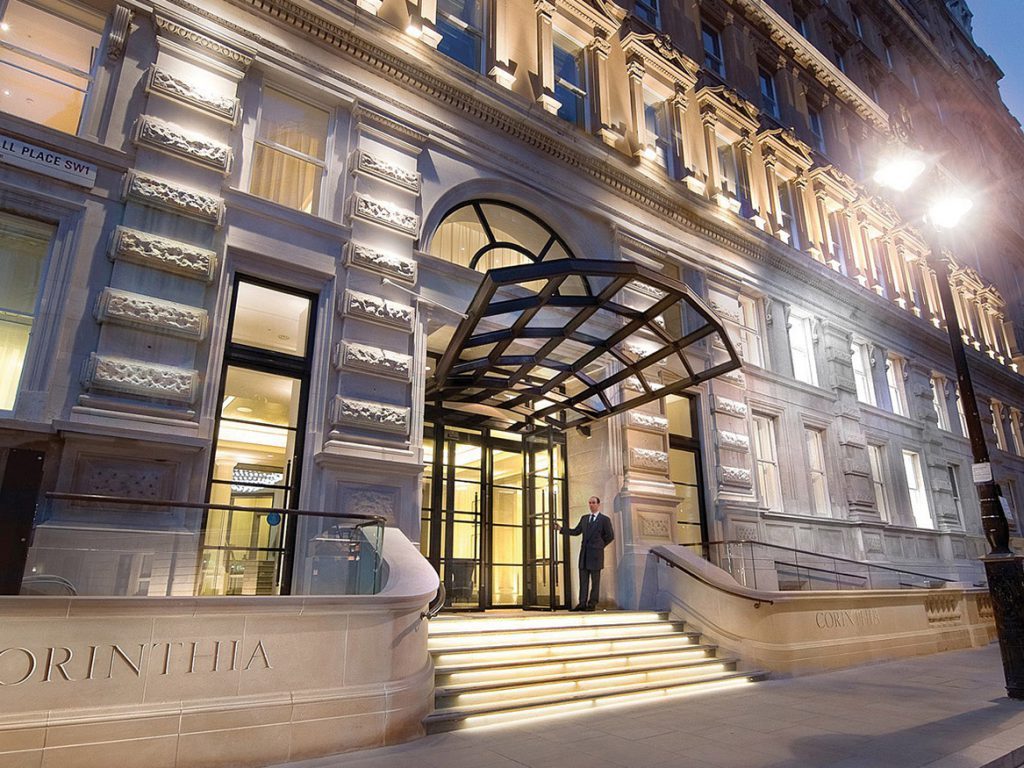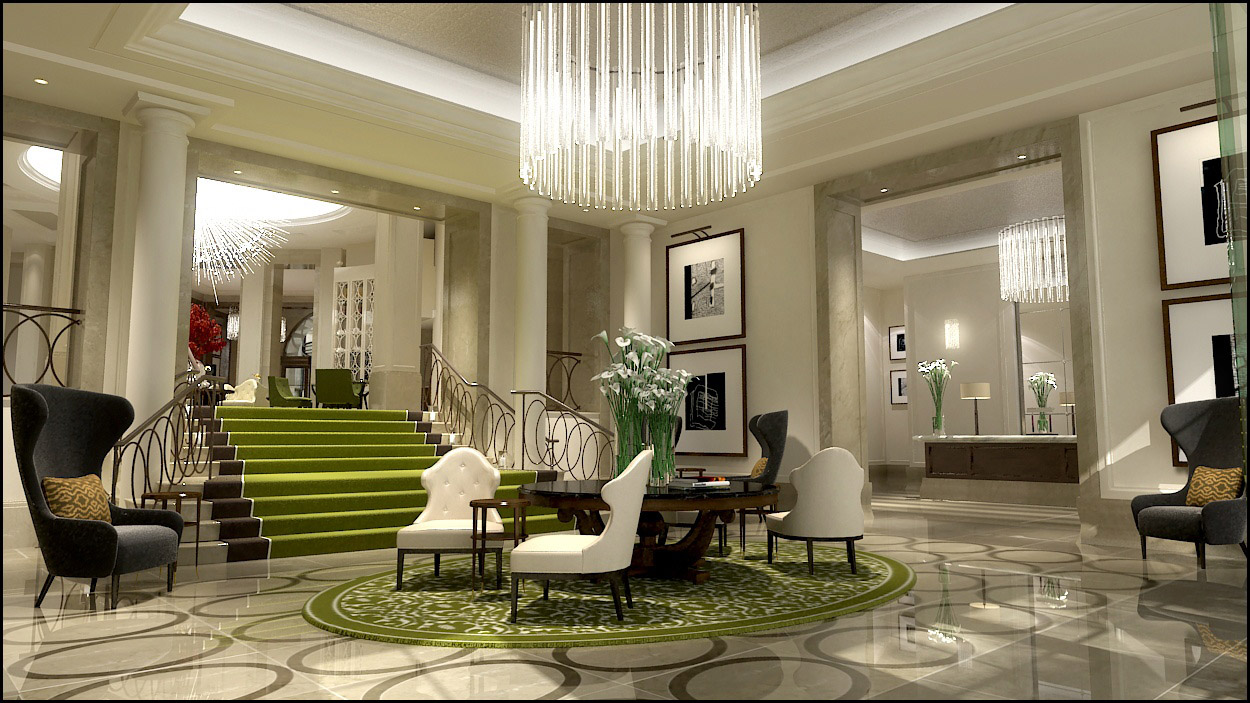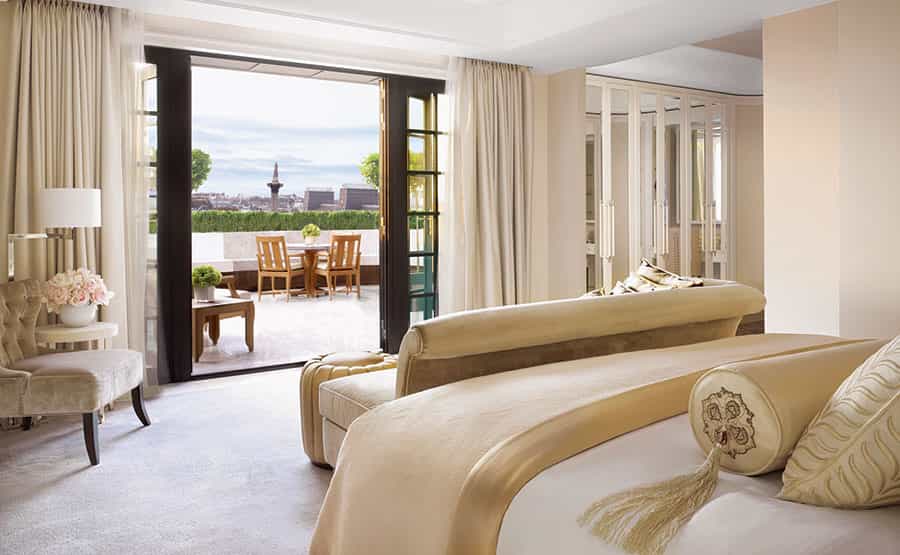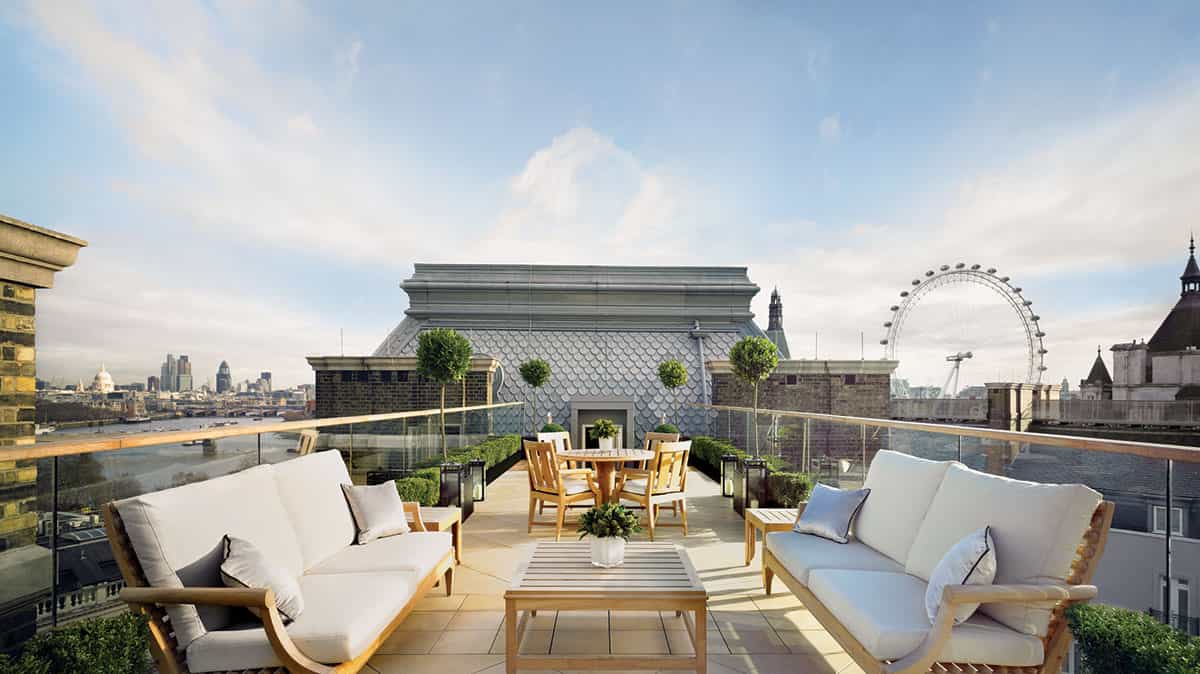
Corinthia London
Its the world's most visited city. Contributor MATTHEW FLACKS discovers a quixotic enclave in a cosmpolitan city at Corinthia London.

Corinthia London
Having extensively explored the labyrinth of intricate villages that make up the Big Smoke in the past ten years, I’ve strolled by elegant hotels more times than I can remember. Often pressing my nose to their immaculately cleansed windows I think fleetingly, “one-day.” Indeed, 2014 was the year to carry me over the threshold and to see how the other half live. My main concern was that I would be discovered as the impostor; that I had no place in such surroundings and I should head back to the burbs where the jobbing actors and artistes belong. I needn’t have worried. Not at the sumptuous Corinthia Hotel.
Occupying a strategic position just minutes from Trafalgar Square, Charing Cross, the theaters of the Strand and the River Thames, the Corinthia is as welcoming as it is grand. The building is steeped in history and demonstrates the most opulent of Victorian architecture; having been built in 1885 as the Hotel Metropole, hosting royalty and high-society. The government requisitioned it during the First World War and finally purchased it in 1936 when it became the administrative offices for the Ministry of Defence. The Corinthia group purchased it in 2008 and restored its fading beauty and grandeur to open its doors in 2011, providing 294 bespoke guest rooms and seven intimately designed penthouses. It is quite the antithesis of the generic hotel chain outpost.

Lobby via Corinthia
On entering the building, I was affected by the sheer detail and craftsmanship that has been attended to; the huge restored Victorian windows, columns and ceilings, the modern and sympathetic interior design, the friendly yet unimposing staff. The building’s rich heritage has clearly been honoured, but all nostalgic stuffiness is swatted away with a contemporary trim. No more so than the sight of the commanding lobby chandelier, comprising 1001 Baccarat crystal baubles, which lights up the opening scene. Decadent? Of course. But warming too.

Guest Room via Corinthia
The rooms are decked out in fine timbers, leathers, silks and Calacutta marble bathrooms, all of which are soft and unintimidating, even for me. (I managed to resist the lure of hoarding the soaps, robes and other such delicacies adorning the rooms – a notable victory on my part). Wide corridors, high ceilings and substantial period windows permitted light to flood into the building and allowed a consistently welcome oxygen hit.
As I moved surreptitiously around the building, predominantly at the behest of my inner voyeur, I delighted in the calm of the uber chic thermal spa; arrestingly dark and cool but the height of sophistication. I ate a deliciously rich meal in Massimo, one of the two restaurants housed in the building. The menu was extensive and the sommelier had done his research expertly. Dining for breakfast in the other restaurant, The Northall, offered local produce and a buffet that included homemade banana cupcakes. It is run by an executive chef with three Michelin stars, so I suppose I should have taken such things for granted. My personal highlight, probably unsurprisingly, was the art deco-inspired Bassoon bar; where guests supped fine, colonial inspired cocktails in a gentile theatrical setting. A nine foot piano forms the bar, and the mixologists and waiters held exquisite knowledge of their brief. The honest, discreet service that Corinthia proclaims was true to the letter, from the cellar to the penthouse.

Rooftop Terrace via Corinthia
I was delighted to discover the hotel even has an annual artist-in-residence scheme, which this year is being offered to an aspiring filmmaker, and has in the past seen the building partially taken over by an innovative theatre company and an emerging artist with a site-specific photo assemblage. It’s indeed a smashing place to stay. The aforementioned window leering impostor in me would say it does have room for a tad more atmosphere, but it is still in its infancy and finding its feet within the crowded hotel landscape of central London. Of course—for many like me—it is a treat, and one that will certainly endure. Fusing whats best of aristocratic trappings, and the infrastructure of bohemian arts and culture, to the masses and their Moveable Feast.
Archives








